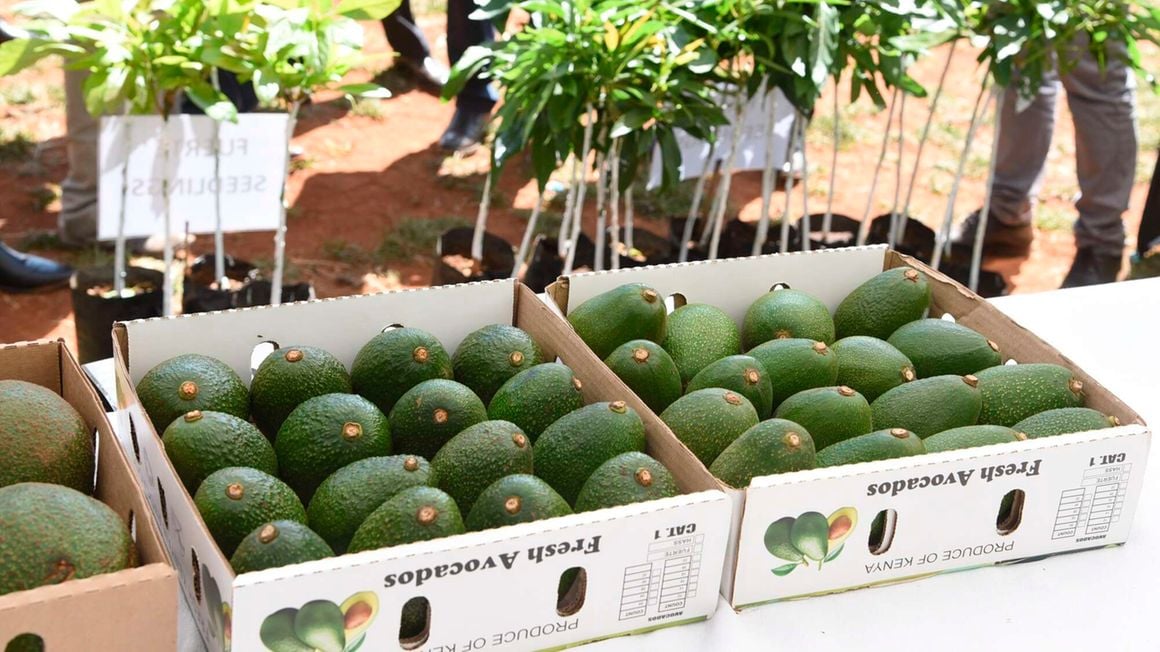
Our Projects are
Transforming African Trade
Quick Contacts
2nd Floor, Fidelity Insurance Centre Waiyaki Way, Westlands

In October last year, horticulture stakeholders agreed on restricting avocado exports to air shipments due to low volume of the fruit for exports in the country. As a result, there has been a widespread speculation about whether Kenya imposed a ban on avocado exports.
The true position is, over the past 10 years, avocado exports have been restricted to air shipments between the months of November and February, due to insufficient volumes to fill sea containers. During this restricted period, exceptions may be granted to specific orchards upon request, provided that they undergo a 100 per cent inspection conducted by relevant government agencies.
This decision was informed by the realisation that certain traders exploited the high demand for avocados. These traders shipped immature fruits, resulting in complaints about the produce not ripening properly at the end market, a development that could damage reputation of Kenya’s fruits.
This restriction thus was enforced to safeguard the country’s markets and reputation as a source of quality avocados.
Following media reports that Kenya had banned avocado exports, buyers went into panic. Export markets operate on long-term relationships; buyers place orders over time relying on supplier consistency. Any disruption in this chain can cause significant disruptions in the export market thus loss of revenue for the industry and the country.
Recently, various organisations took journalists through training on some of the technical aspects affecting trade in fresh produce industry.
Such trainings are important to note what substances can and cannot be used for particular markets and why. There is an urgent need to invest in agriculture information development and dissemination.
Agriculture, unlike other news items, is rarely sensational, yet food security, social stability, human health, and environmental sustainability are highly dependent on how we farm as well as how we handle the value chain from farm to fork.
Kenya’s horticulture exports are a key contributor to the country’s foreign exchange earnings, technology transfer and employment creation. The sector is mainly private sector driven, one of the factors that have kept the sector going.
Players have formed self-regulating associations where codes of practice are agreed, and peer checked to safeguard their market share. Repeatedly, the associations remind members to adhere to the laid down practices or perish together. The growers are regularly audited against industry, national and international standards with emphasis on voluntary standards.
The authors are the Country Director, Kenya at TradeMark Africa and CEO, Fresh Produce Consortium of Kenya
In Kenya where regulators like the Horticulture Crops Directorate (HCD), Kenya Bureau of Standards (KEBS) and the Kenya Plant Health Inspectorate Service (Kephis) strive to enforce stringent standards, the media becomes an essential partner in amplifying the importance of adhering to these standards.
With Kenya entering into new trade agreements, such as the recently signed Economic Partnership Agreement (EPA) with the EU, information on these milestones becomes critical to support the country to safeguard and increase her exports.
The EPA means Kenya’s produce can access the EU market on quota free, duty-free basis. It also means the industry stakeholders need to do all it takes to ensure every available opportunity is exploited to benefit from the agreement.
Question is, do those charged with the responsibility to support the smallholder farmers increase production know what is expected of them? This is where the media becomes a key partner in content creation and dissemination of accurate and timely information to empower the decision makers. Kenya doesn’t produce in isolation, it has very serious competition and must work on its competitive edge, quality, cost-effective, and reliable supply.
Read original article
Disclaimer: The views and opinions expressed in this article are those of the authors and do not necessarily reflect the official policy or position of TradeMark Africa.